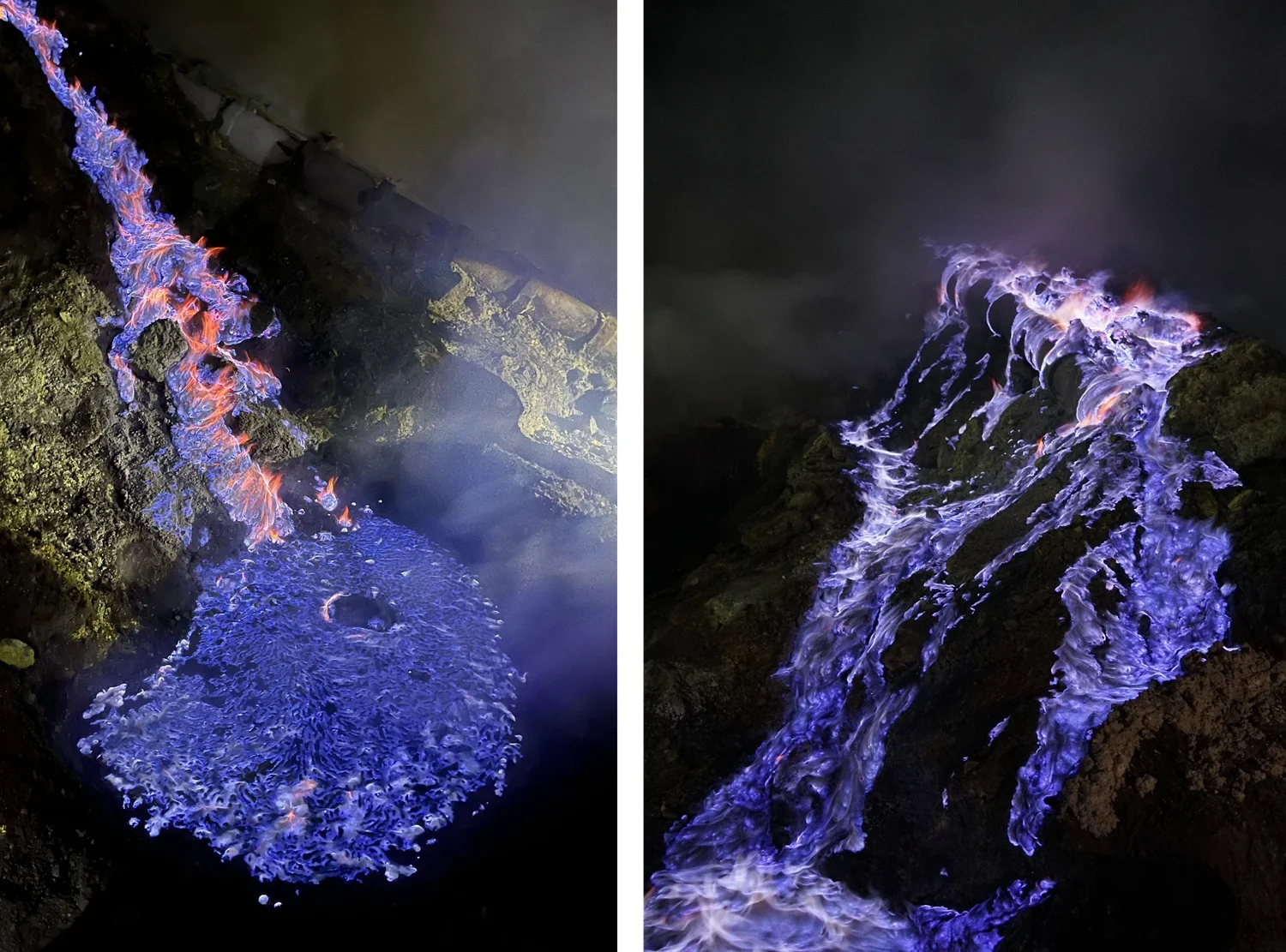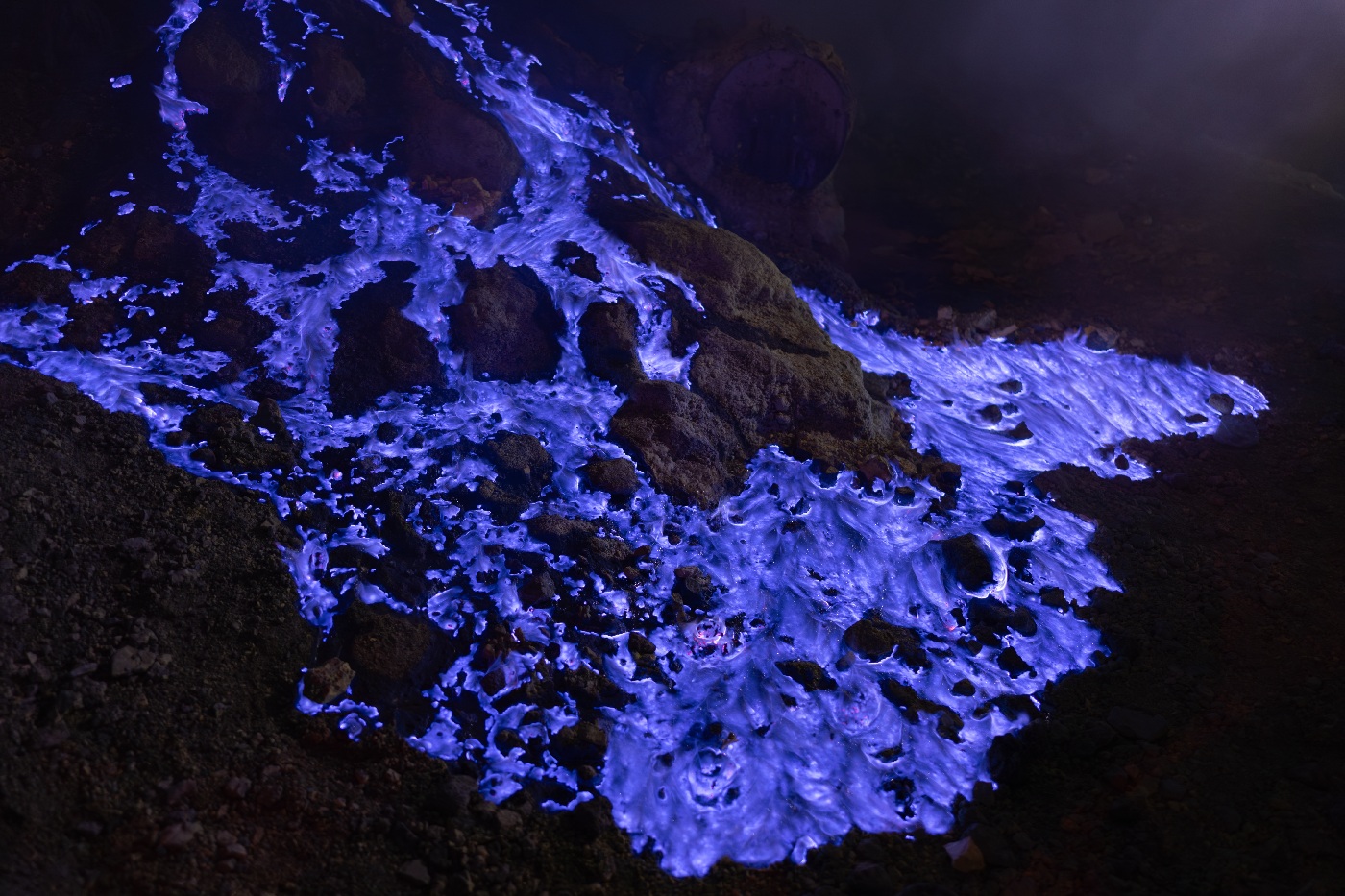Despite the name, blue lava is not actually molten lava, but rather an extremely rare natural phenomenon caused by the combustion of sulphuric gases emitted from certain volcanoes and fumarole vents.
Unlike the familiar warm red and orange hue in typical lava flows, blue lava gives off an eerie electric blue that is only visible at night.
For blue lava to occur, large underground sulphur deposits are placed under intense heat and pressure, releasing sulphuric-rich gases at high temperatures. Upon reaching the surface, the gas ignites against the lower surface temperatures and produces a blue flame, sometimes up to 5 metres in height.
This is caused by the excited electrons in the sulphur atoms releasing energy as they return to their ground state. In instances when the sulphur condenses to liquid, it flows with the illusory appearance of lava while igniting with blue flames.

There are only a handful of locations across the globe where conditions allow the formation of blue lava, with the most prominent being Indonesia’s Kawah Ijen volcano on the island of Java.
Kawah Ijen, part of the Ijen volcano complex, is a stratovolcano that reaches an elevation of 2,769 meters (9,085 feet). Its active crater spans 722 metres (2,369 feet) in diameter and contains the world’s largest lake of sulfuric acid. Known locally as Api Biru, the blue flames that rise from cracks in the crater are steeped in local folklore, often believed to be the manifestation of mystical or demonic beings.
Blue lava can also sometimes occur at Yellowstone National Park in the United States. While the formation doesn’t follow the same principle of gas being emmitted from a vent, forest fires in the park have been known to melt and burn surface deposits of sulphur, causing flowing rivers of blue lava. Remnants of past episodes exist on the ground in the form of black lines.
Other locations where blue lava has been reported include the Erta Ale shield volcano in Ethiopia, the Dallol subaerial volcanic vents (also in Ethiopia), and several other craters within the Ijen volcano complex.
Header Image : Kawah Ijen volcano – Image Credit : Shutterstock





